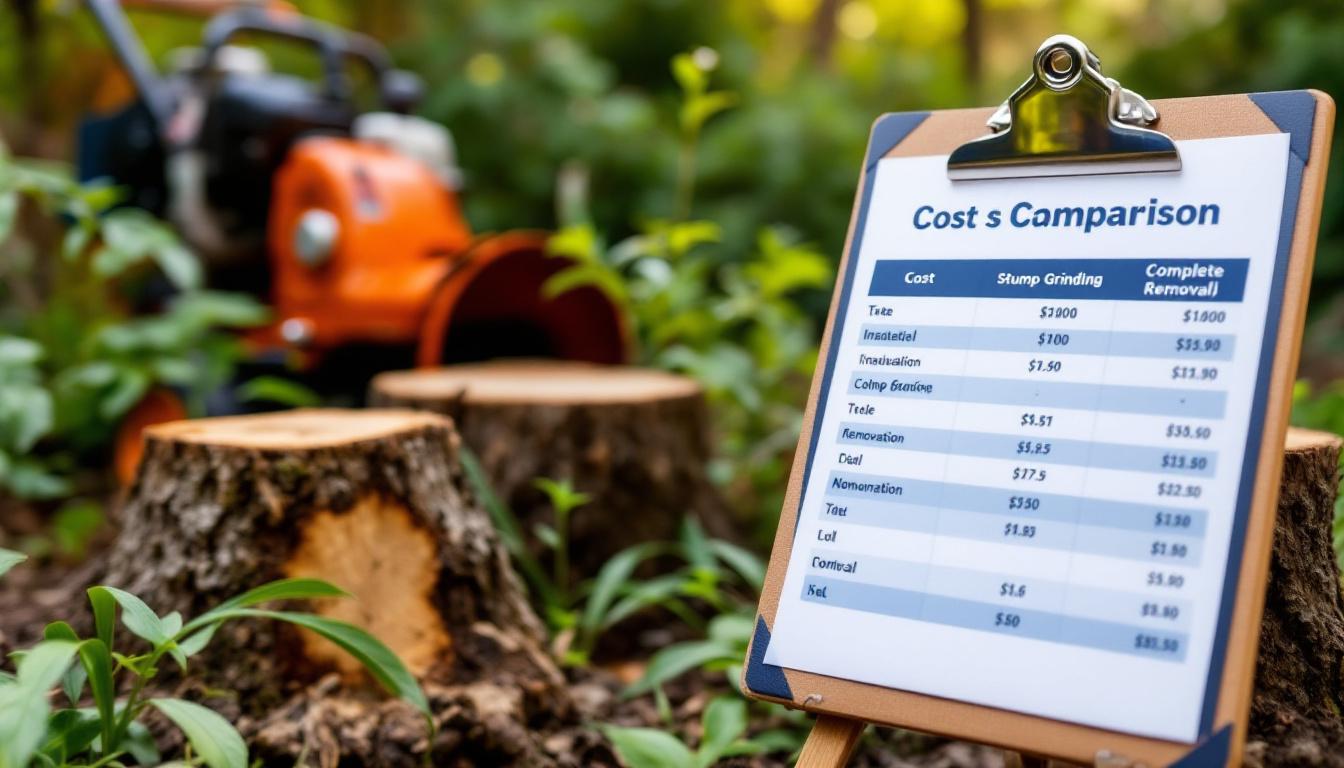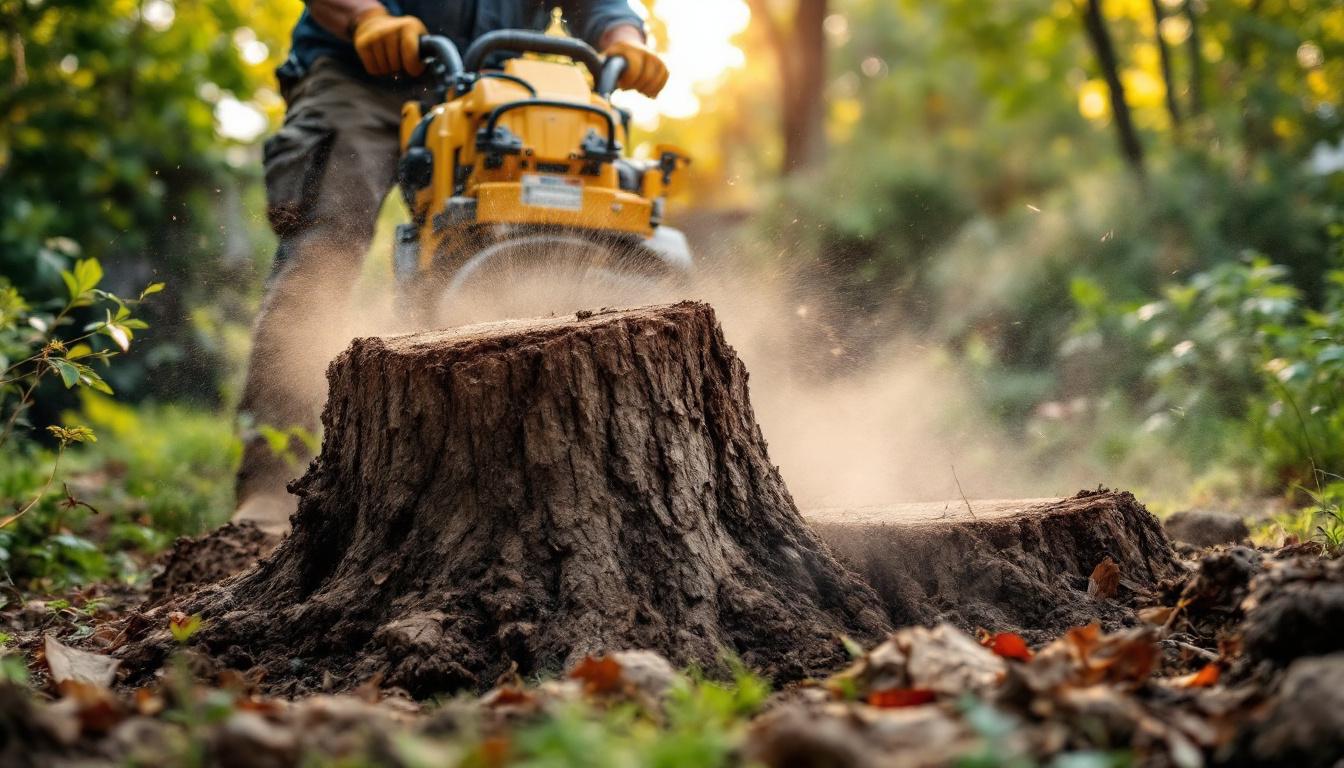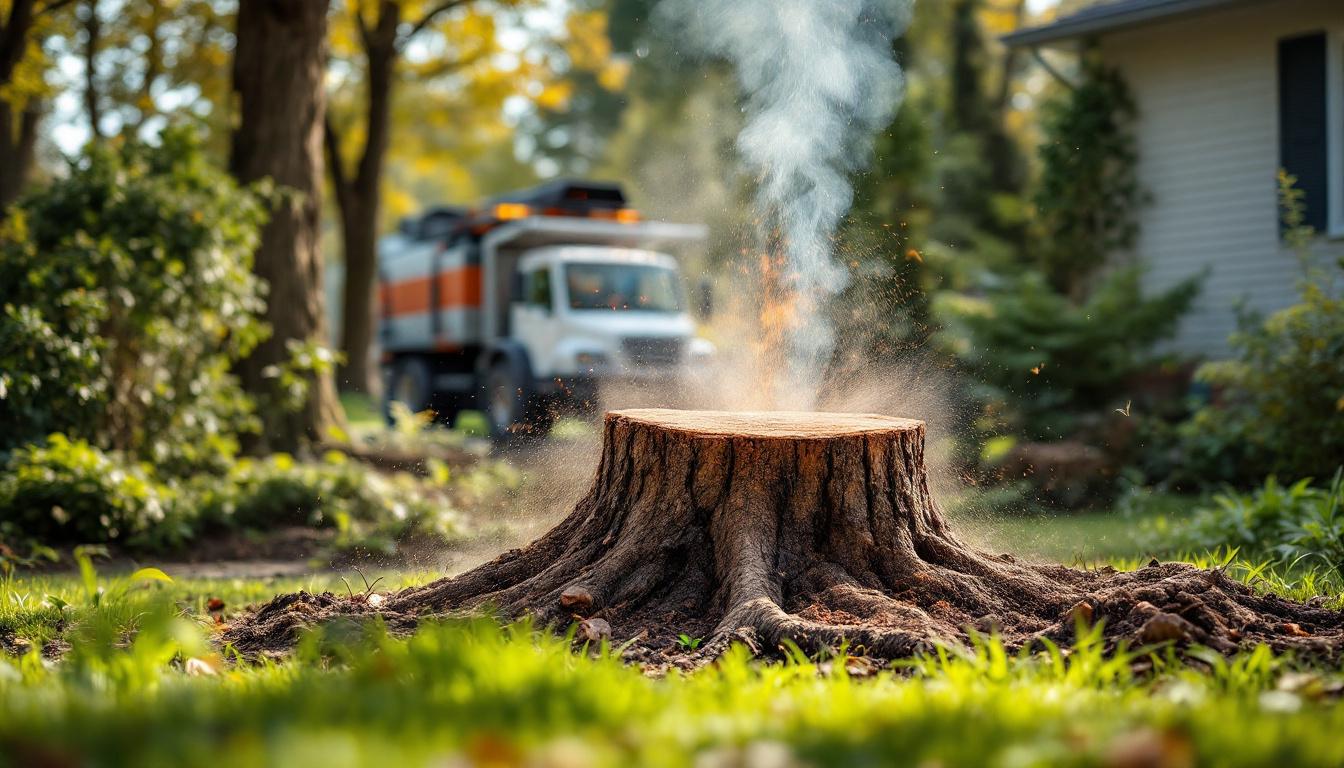When a tree is cut down, the remaining stump can pose various challenges, from aesthetic concerns to safety hazards. Homeowners often face the dilemma of whether to grind the stump down or remove it entirely. Understanding the differences between tree stump grinding and removal is crucial in making an informed decision that best suits your needs. This article will explore the pros and cons of each method, helping you determine the right option for your property.
Understanding Tree Stump Grinding
Grinding tree stump is a process that involves using a specialised machine to grind the stump down to below ground level. This method is often preferred for its efficiency and minimal disruption to the surrounding area.
The Process of Stump Grinding
During stump grinding, a professional uses a stump grinder, a powerful machine equipped with a rotating blade, to chip away at the wood. The grinder is manoeuvred over the stump, gradually reducing it to wood chips. This process can take anywhere from 30 minutes to a few hours, depending on the size of the stump.
Once the stump is ground down, the remaining wood chips can be used as mulch or removed from the site. The depth of grinding can vary, but it typically goes down to about 15-30 cm below ground level, allowing for easy replanting or landscaping.
Advantages of Stump Grinding
- Cost-Effective: Stump grinding is generally less expensive than complete stump removal, making it an attractive option for homeowners on a budget.
- Less Disruption: The grinding process causes minimal disturbance to the surrounding soil and landscape, preserving the integrity of your garden.
- Quick Process: Stump grinding can be completed relatively quickly, allowing you to move forward with your landscaping plans without significant delays.
Disadvantages of Stump Grinding
- Potential for Regrowth: If the tree was diseased or infested, there is a risk that roots may still be alive, leading to potential regrowth.
- Not Suitable for All Situations: In cases where the stump is located near structures, underground utilities, or other trees, grinding may not be feasible.
- Surface Roots Remain: While the stump is ground down, the roots often remain in the ground, which can complicate future landscaping efforts.
Exploring Tree Stump Removal
Tree stump removal involves extracting the entire stump and its root system from the ground. This method is more invasive but can be necessary in certain situations.
The Process of Stump Removal
Stump removal typically requires heavy machinery, such as a backhoe or excavator, to dig out the stump and its roots. The process can be labour-intensive and may take several hours to complete, depending on the size and depth of the roots.
Once the stump is removed, the hole left behind can be filled with soil, and the area can be landscaped as desired. This method ensures that no part of the stump remains, eliminating the risk of regrowth.
Advantages of Stump Removal
- Complete Elimination: Removing the stump and roots entirely ensures that there will be no regrowth or pest issues in the future.
- Improved Aesthetics: A clean slate left behind after removal allows for more flexibility in landscaping and planting new trees or plants.
- Enhanced Safety: Eliminating the stump reduces the risk of tripping hazards and makes the area safer for children and pets.
Disadvantages of Stump Removal
- Higher Cost: Stump removal is generally more expensive than grinding due to the additional labour and equipment required.
- More Disruption: The process can be disruptive to the surrounding landscape, potentially damaging nearby plants and structures.
- Longer Time Frame: The removal process can take longer, delaying any subsequent landscaping plans.
Factors to Consider When Choosing Between Grinding and Removal
When deciding between stump grinding and removal, several factors should be taken into account to ensure the best outcome for your property. Click here to get about: Why a Buyers Agent Queens Park Is Worth the Investment
Size and Type of the Stump
The size of the stump plays a significant role in determining the best method. Smaller stumps may be more suited for grinding, while larger stumps with extensive root systems might necessitate removal. Additionally, the type of tree can influence the decision; hardwoods often have deeper roots that can complicate grinding.
Location of the Stump
The stump’s location is another critical factor. If the stump is situated near buildings, fences, or other trees, grinding may be the safer option to avoid damaging surrounding structures. Conversely, if the stump is in an open area, removal may be more feasible.
Future Landscaping Plans
Consider your future landscaping plans when making a decision. If you plan to plant new trees or create a garden bed in the same spot, complete removal might be the better choice. However, if you intend to use the area for other purposes, grinding could suffice.
Cost Comparison: Grinding vs. Removal
Understanding the costs associated with stump grinding and removal is essential for budgeting your project. Generally, stump grinding is less expensive, ranging from $50 to $300 depending on the stump’s size and location. In contrast, stump removal can cost between $100 and $800, factoring in the complexity of the job and the equipment required.

Additional Costs to Consider
Beyond the basic costs of grinding or removal, homeowners should consider potential additional expenses. For instance, if the stump is located near utility lines, a professional may need to conduct a site assessment, which could incur extra charges. Additionally, if you choose to have the wood chips removed after grinding, this may also add to the overall cost.
DIY vs. Professional Services
While some homeowners may consider tackling stump grinding or removal as a DIY project, it is generally advisable to hire professionals. Stump grinding equipment can be dangerous, and improper use may lead to injury or property damage. Furthermore, professionals have the expertise to assess the situation and choose the best method for your specific needs.
Conclusion: Making the Right Choice for Your Property
Ultimately, the decision between tree stump grinding and removal depends on various factors, including the stump’s size, location, and your future landscaping plans. While grinding is often more cost-effective and less disruptive, removal provides a clean slate and eliminates the risk of regrowth. By carefully considering your options and consulting with professionals, you can make an informed decision that enhances the beauty and safety of your outdoor space.
More to Read : How Much Does Stump Grinding Cost? A Complete Price Breakdown


